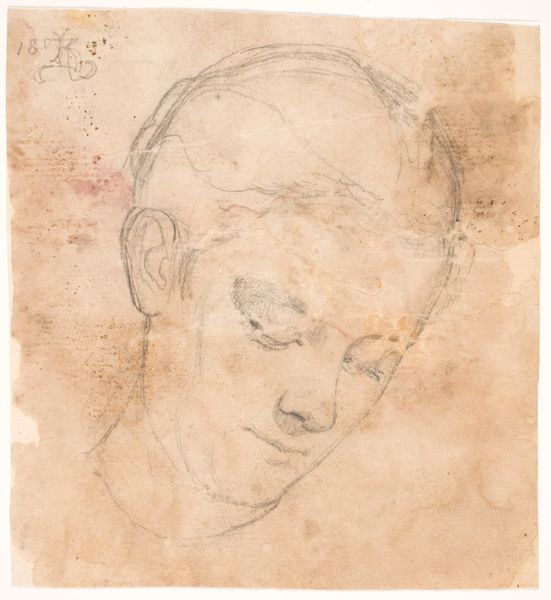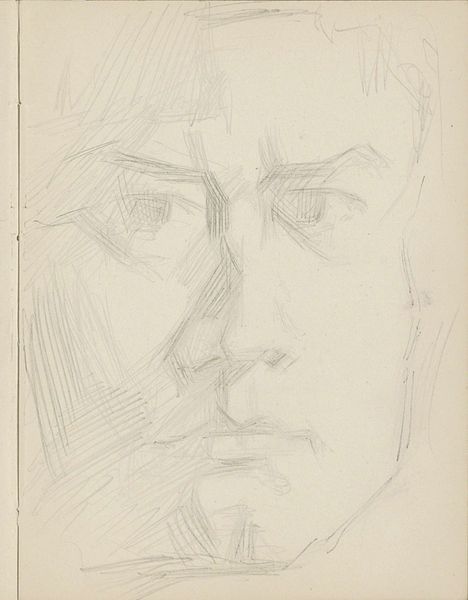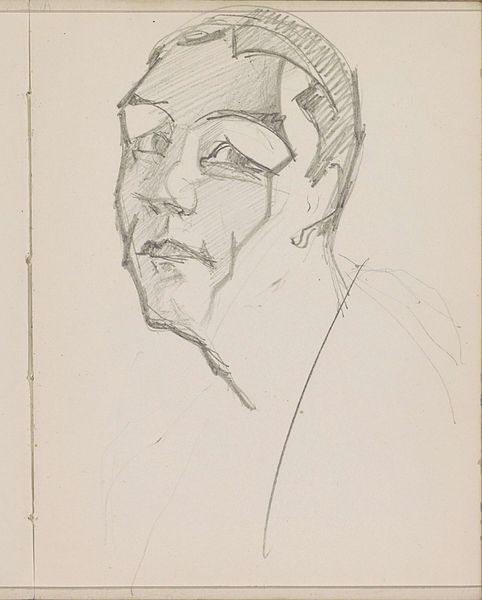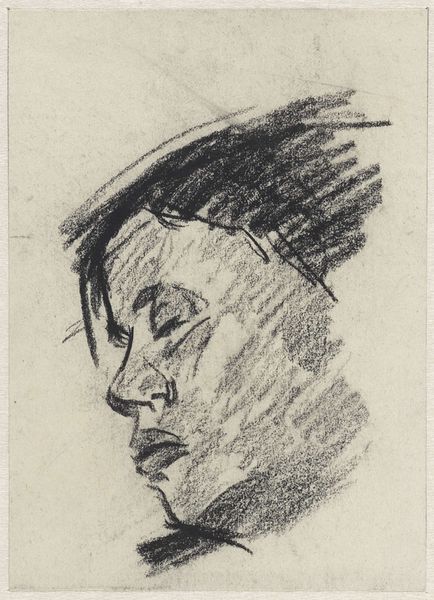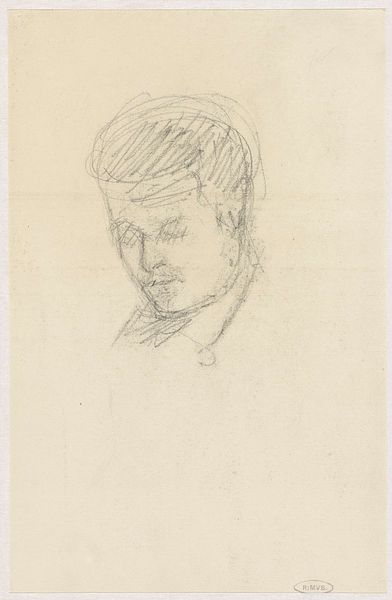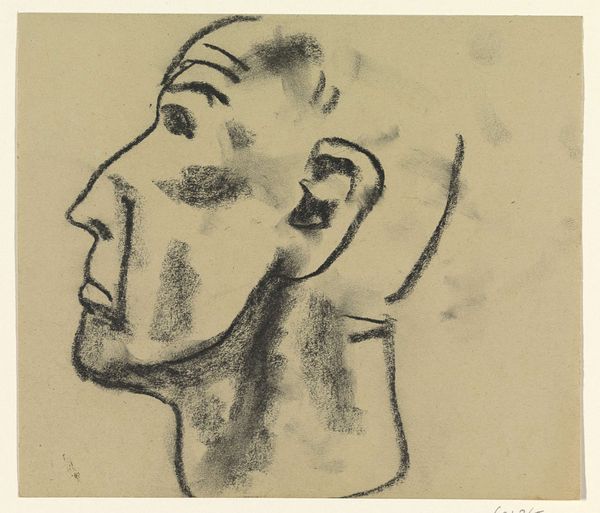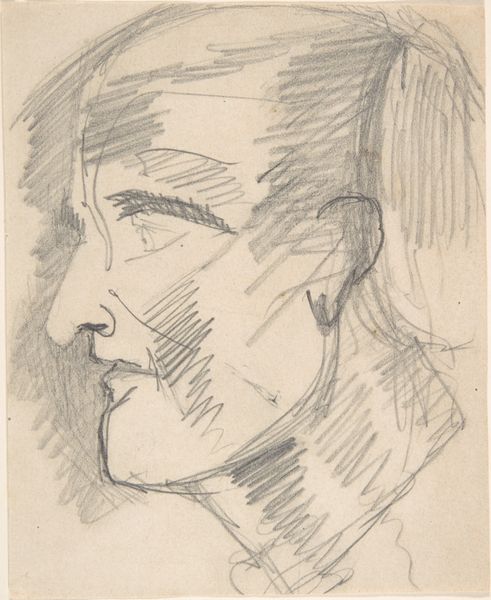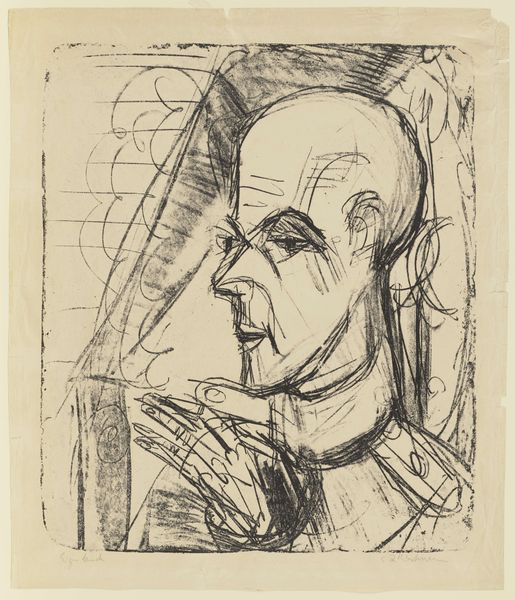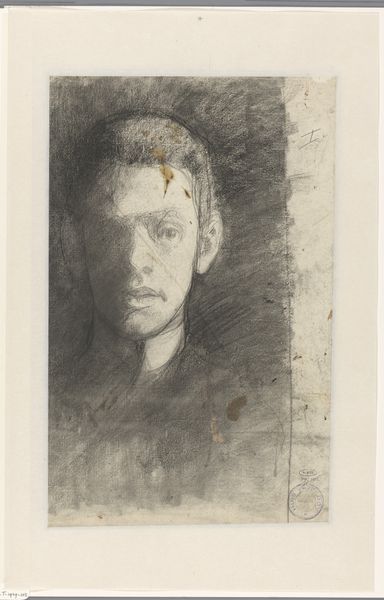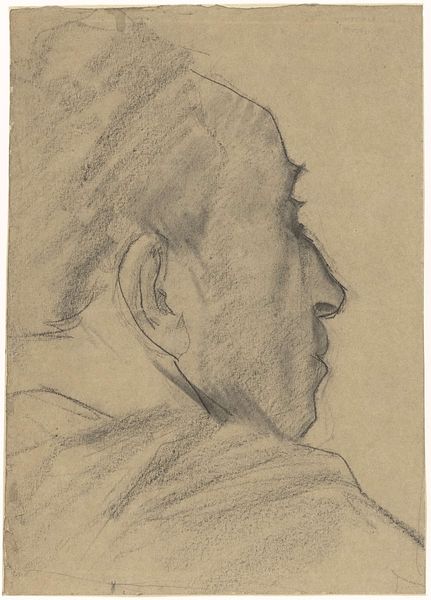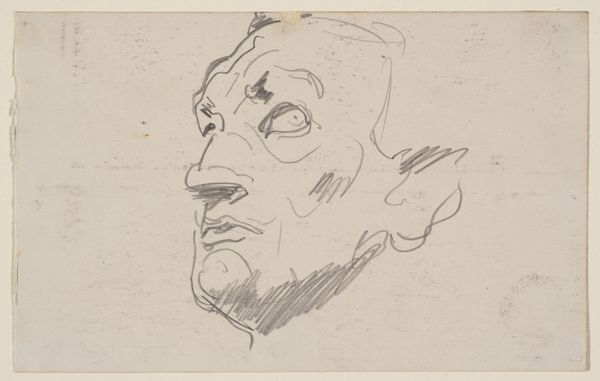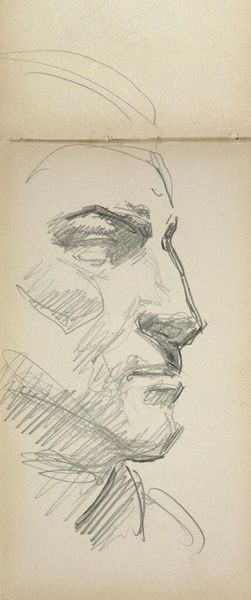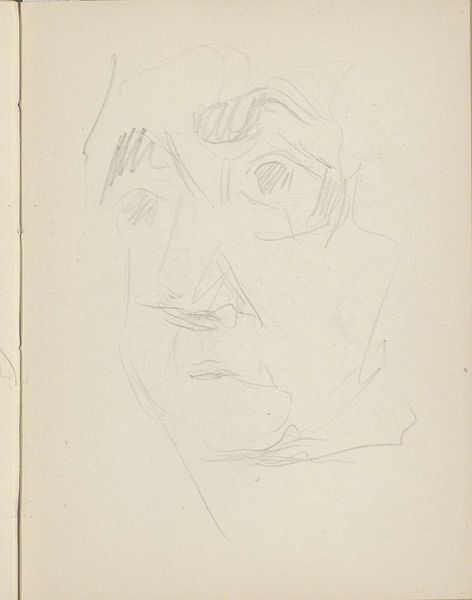
drawing, paper, graphite
#
portrait
#
drawing
#
self-portrait
#
paper
#
graphite
#
realism
Dimensions: height 230 mm, width 200 mm
Copyright: Rijks Museum: Open Domain
Curator: Welcome. We’re looking at Jan Veth’s self-portrait, dating from around 1889. It’s a graphite drawing on paper, currently held here at the Rijksmuseum. Editor: It’s interesting. The immediate impression is…stark, almost severe. The intense focus on his face, framed by that rather scratchy background… it draws you right in. Curator: Indeed. Veth was a prominent figure, not just an artist but a critic, poet, and art historian. He played a vital role in the Dutch art scene, championing artists like Breitner and Israels. This self-portrait provides an intimate glimpse into the man behind the public persona. Editor: The drawing itself is fascinating. Look at the varying pressure he applies with the graphite – creating subtle gradations in tone that give depth to his features. The lines defining his brow, the shadows around the eyes – he captures an incredible likeness with what seems like a deliberately limited technique. Curator: Absolutely. Veth was deeply involved in the aesthetic debates of his time, particularly concerning realism and naturalism. His work reflects a commitment to capturing an honest representation of the world, a world separate from idealism, even in self-representation. Editor: Yet, there’s a strong psychological element, wouldn’t you agree? The somewhat somber gaze behind those spectacles. It’s more than a mere recording; it's a meditation on self. The asymmetry, almost, conveys this sense as it guides the viewing in an unusual direction. Curator: Certainly. Veth’s influence extended to art education, and one of the more remarkable elements of the history of Dutch art. One could examine how that ethos trickles down into his craft. This drawing may be perceived, with that information, more so as a functional work. Editor: It's as if he wants us to see beyond the surface, to question what it means to be an artist, to be an intellectual in that era. Very fascinating in itself. Curator: Yes, it presents a very curious figure of introspection from the Dutch realist circle of his time. Thank you for those considerations. Editor: Indeed. An exercise in formal constraints of self.
Comments
No comments
Be the first to comment and join the conversation on the ultimate creative platform.
